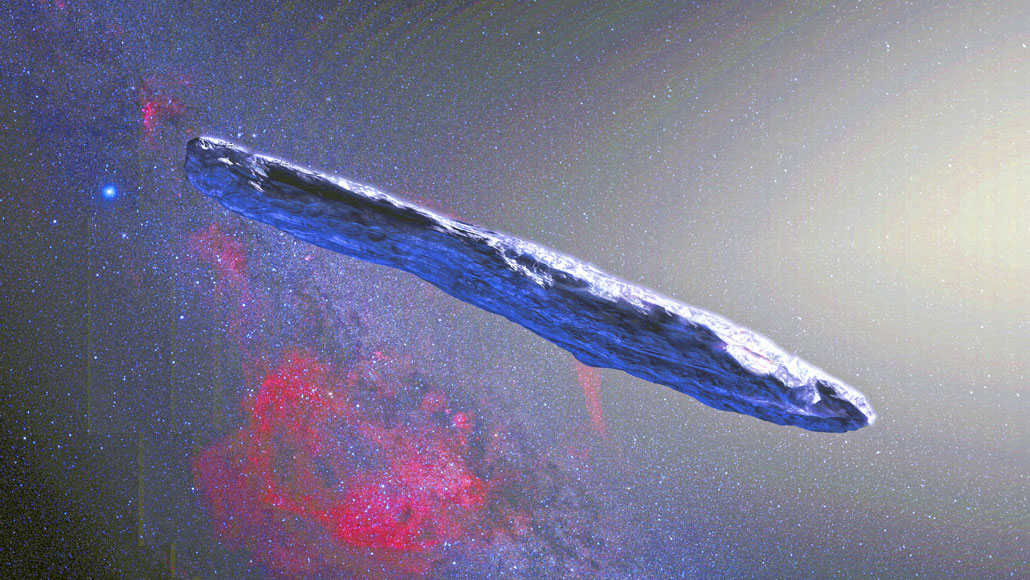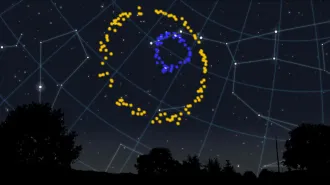
The second mysterious interstellar object found zipping through the solar system, 2I/Borisov, looks like a run-of-the-mill comet. That stands in stark contrast to the first known interstellar object, ‘Oumuamua (illustrated).
Stuart Rankin/Flickr (CC BY-NC 2.0)








